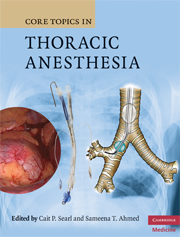
- Cited by 2
-
Cited byCrossref Citations
This Book has been cited by the following publications. This list is generated based on data provided by Crossref.
Rhee, Amanda J. and Shore-Lesserson, Linda 2010. Anesthesia Student Survival Guide. p. 265.
Rhee, Amanda J. and Shore-Lesserson, Linda 2016. Anesthesia Student Survival Guide. p. 295.
- Publisher:
- Cambridge University Press
- Online publication date:
- December 2009
- Print publication year:
- 2009
- Online ISBN:
- 9780511576683


